Search Images
Browse Content (p. 1438)
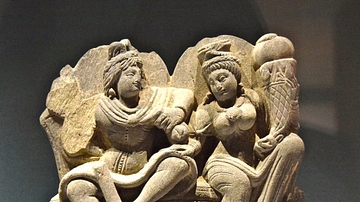
Image
Panchika & Hariti
A sculpture from Gandhara depicting Panchika and Hariti (the god of wealth and his wife). The purse and cornucopia suggest the figures may also represent Kubera and Ardochsho. Schist, 100-300 CE. (Ashmolean Museum, Oxford)
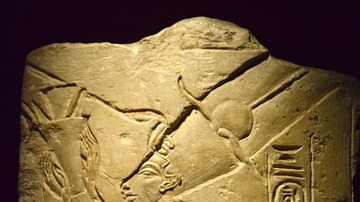
Image
Nefertiti Relief
Relief from a limestone column depicting Queen Nefertiti offering a bouquet to the Aten. From Tell el-Amarna, Egypt, c. 1330 BCE. (Ashmolean Museum, Oxford)
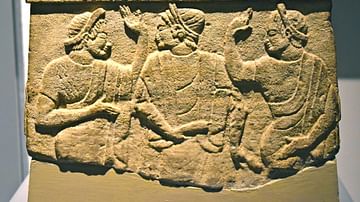
Image
Etruscan Dancers
Limestone relief from an Etruscan tomb monument depicting dancers, 500-400 BCE. Probably from Chiusi, northern Italy. (Ashmolean Museum, Oxford)
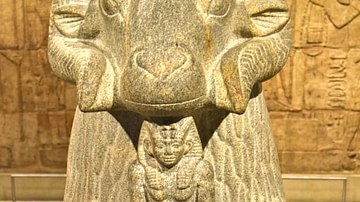
Image
Ram of Amun
Granite gneiss of the Ram of Amun. The standing figure is King Taharqa. 25th Dynasty, c. 680 BCE, from Temple T, Kawa, Egypt. (Ashmolean Museum, Oxford)
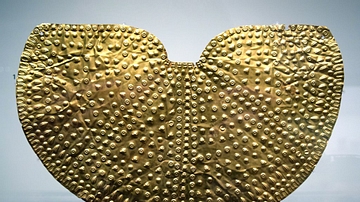
Image
Thracian Gold Pectoral
A Thracian gold pectoral. From a king's tomb at Dalboki, Bulgaria. 500-400 BCE. (Ashmolean Museum, Oxford)
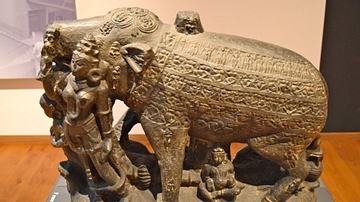
Image
Varaha
A stone statue of Varaha, the boar incarnation of Vishnu. The standing figure is Bhudevi, the Earth goddess whom Varaha was sent to rescue. From northern India, c. 900 CE. (Ashmolean Museum, Oxford)
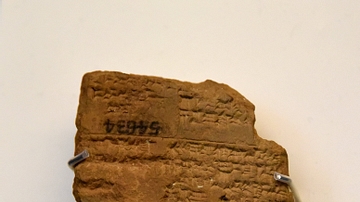
Image
Mesopotamian Tablet Describing the Walls of Babylon
This clay tablet fragment gives detailed measurements for the inner city wall called Imgur-Enlil at the start of Nebuchadnezzar II's reign. It names landmarks including Zababa and Urash gates. Modern surveys show that the figures are realistic...
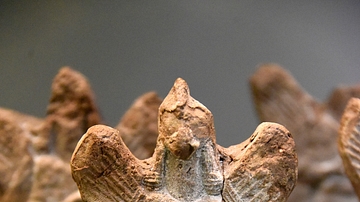
Image
Bird-headed Apkallu for Home Protection
In order to protect the household, these protective figures (apkallu or sage) would be buried beneath the floor in groups of seven. From Nimrud, Northern Mesopotamia, Iraq. Neo-Assyrian Period, 900-612 BCE. (The British Museum, London)
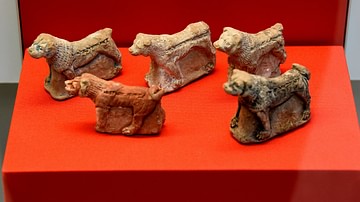
Image
Model Clay Dogs from Nineveh
These counterparts of real mastiffs were buried to guard a property from devils and demons. Ritual instructions for making and inscribing them survive on clay tablets. This pack was found beneath a palace doorway at Nineveh. Each is named...
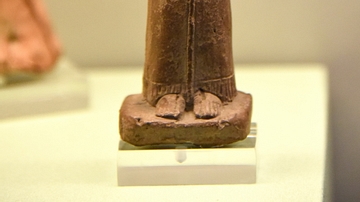
Image
Lahmu
Lahmu was a minor god associated with the god Ea. Ritual texts prescribe that such figures be buried in the corners of a room and in the courtyard. From Nineveh, Northern Mesopotamia, Iraq. Neo-Assyrian Period, 900-612 BCE. (The British Museum...